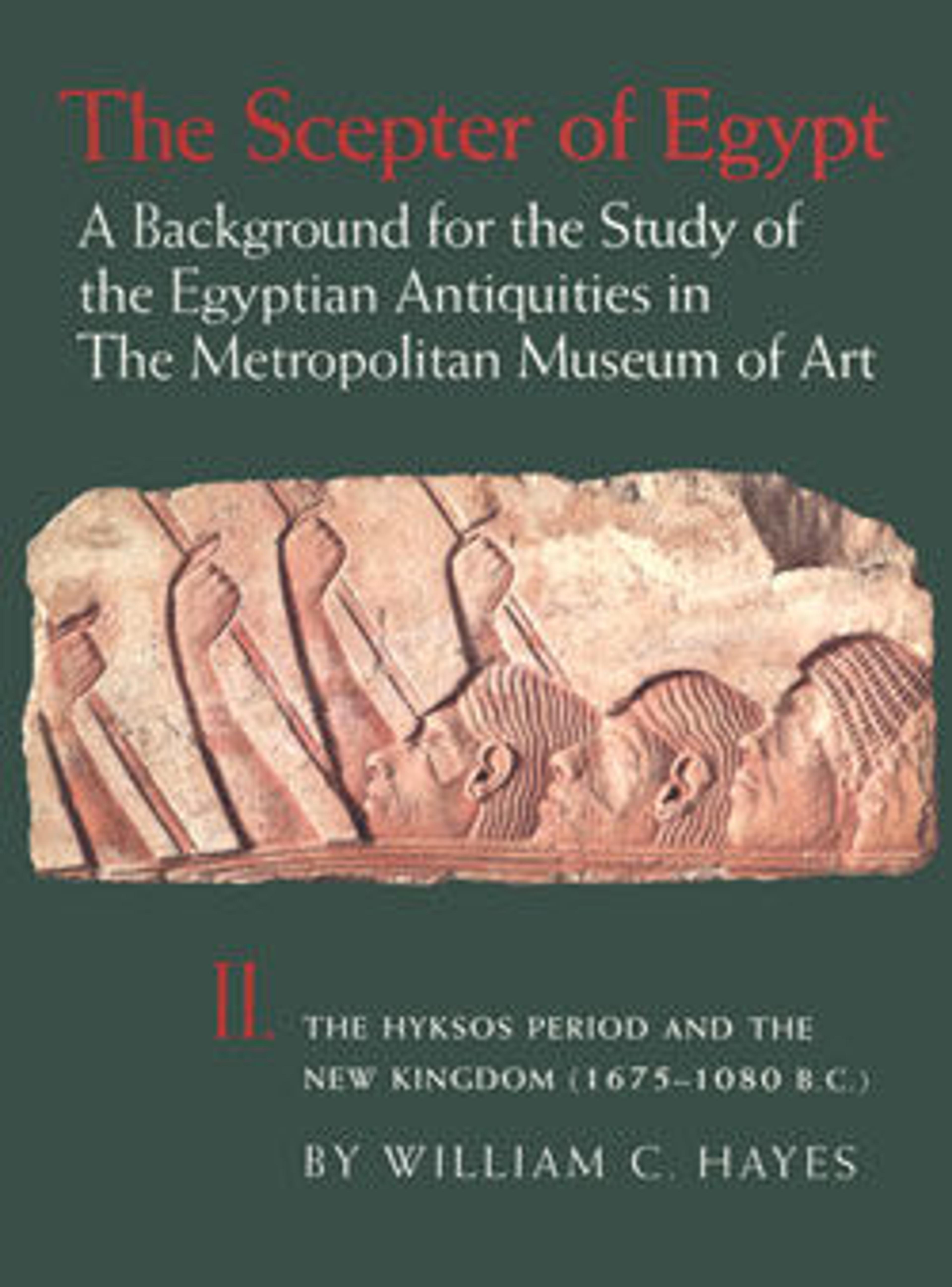Rishi coffin
Discovered in a tomb cut into the courtyard of a larger Middle Kingdom monument, this is an interesting example of a rishi (feathered) coffin. As is the case on most coffins of this type, the crudely-carved and painted face of the deceased is shown framed by the striped nemes headcloth, in this case with short feathers shown covering the top. Around the neck is painted a broad collar with falcon-head terminals; a vulture, its wings outstretched, protects the chest. Covering the body are feathers of various sizes, representing a bird's body, tail,, and wing feathers. A vertical band of inscription down the center of the lid asks that Ptah and Osiris give royal offerings to the ka of the deceased. Unfortunately, the name of the coffin's eventual owner was never added to the space at the end, although the mummy of a woman was found inside. On the front of the feet are figures of the jackal-god Anubis on a shrine, and on the bottom of the feet, Isis and Nephthys kneel facing one another on neb baskets, flanking a shen that symbolizes eternity.
What makes this coffin unusual is that the box, normally painted a solid black on coffins of this type, has been decorated with scenes: on the left is the funerary procession; and on the right are the offering ceremonies being carried out in front of the mummy, which has been set up front of the tomb. Such scenes are more commonly found on "white" coffins of the early 18th Dynasty (see for example 14.10.2a, b), suggesting a transitional date for this example.
What makes this coffin unusual is that the box, normally painted a solid black on coffins of this type, has been decorated with scenes: on the left is the funerary procession; and on the right are the offering ceremonies being carried out in front of the mummy, which has been set up front of the tomb. Such scenes are more commonly found on "white" coffins of the early 18th Dynasty (see for example 14.10.2a, b), suggesting a transitional date for this example.
Artwork Details
- Title:Rishi coffin
- Period:Second Intermediate Period–Early New Kingdom
- Dynasty:Dynasty 17–early Dynasty 18
- Date:ca. 1640–1504 B.C.
- Geography:From Egypt, Upper Egypt, Thebes, Asasif, Tomb CC 62, tomb no. 64, Burial 10, Carnarvon Excavations 1907–1914
- Medium:Sycomore wood, stucco, paint
- Dimensions:L. 218 cm (85 13/16 in); H. 51 cm (20 1/16 in)
- Credit Line:Gift of the Earl of Carnarvon, 1914
- Object Number:14.10.1a, b
- Curatorial Department: Egyptian Art
More Artwork
Research Resources
The Met provides unparalleled resources for research and welcomes an international community of students and scholars. The Met's Open Access API is where creators and researchers can connect to the The Met collection. Open Access data and public domain images are available for unrestricted commercial and noncommercial use without permission or fee.
To request images under copyright and other restrictions, please use this Image Request form.
Feedback
We continue to research and examine historical and cultural context for objects in The Met collection. If you have comments or questions about this object record, please contact us using the form below. The Museum looks forward to receiving your comments.
